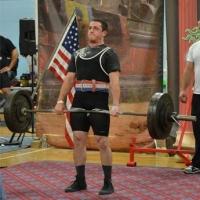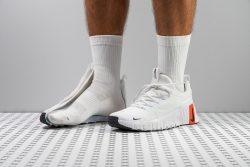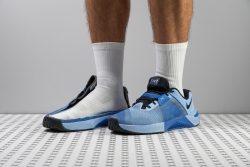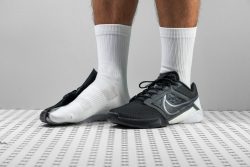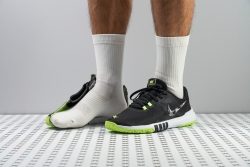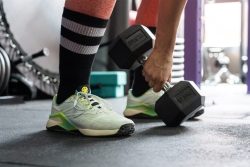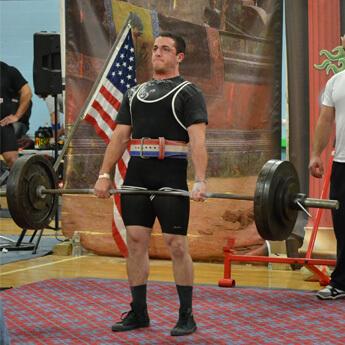7 Best Nike Cross-training Shoes in 2025
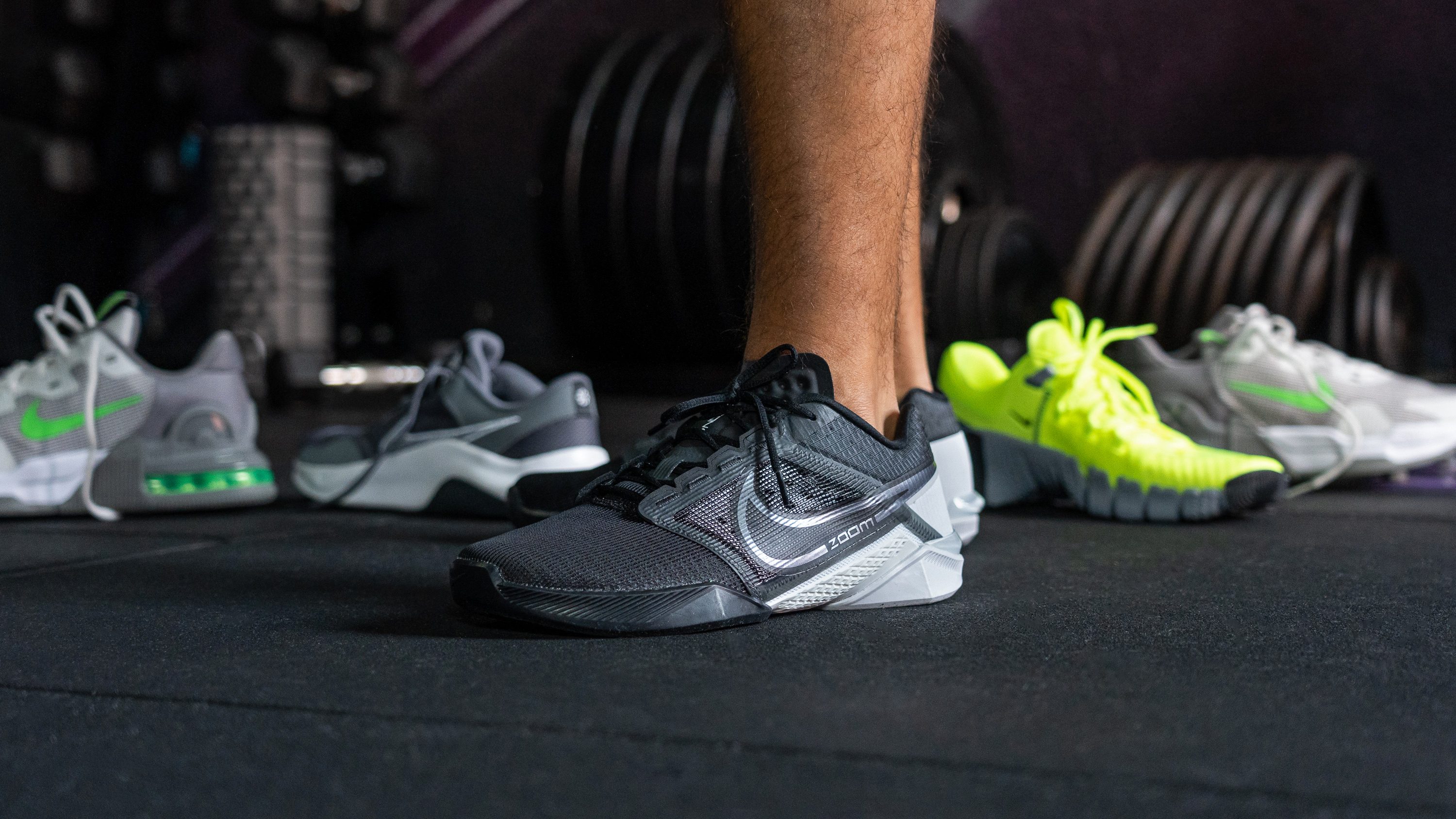
We buy shoes ourselves. We earn commissions when you buy through us, at no extra cost. Why trust us
From the do-it-all Nike Free Metcon series to the ever-popular Nike Metcon models, Nike offers several of the most highly-rated cross-training kicks that can handle multiple exercises. Whatever hybrid training needs you may have, there’s a pair of Nike shoes for you.
It can be a bit mindboggling to decide which pair is the best for you. To help you with that, we’ve acquired cross-training kicks from Nike and personally discovered all the positives and negatives behind them.
We tested them while working out, and we logged everything we observed. After that, we concluded which ones were the best overall and in various categories. Check out our top picks.
How we test Nike cross-training shoes
Evaluating all the quality shoes in our repertoire requires serious testing in the gym. But, we don't stop there. We also analyse the shoes in our lab to check the technologies used, the anatomy, and to measure everything that can be measured!
Our top-pick selection procedures include the following:
- Buy the Nike cross-training shoes for wear and lab tests with our own money to maintain our 100% objectivity.
- Go to the gym and do hybrid training sessions with each model. We determine how the shoes feel and perform and take notes.
- Split the shoes in half and cut them into pieces. We use different tools and devices to measure the stack height, shock absorption, energy return, breathability, durability, flexibility, and other features important for cross-training.
Best Nike cross-training shoes overall
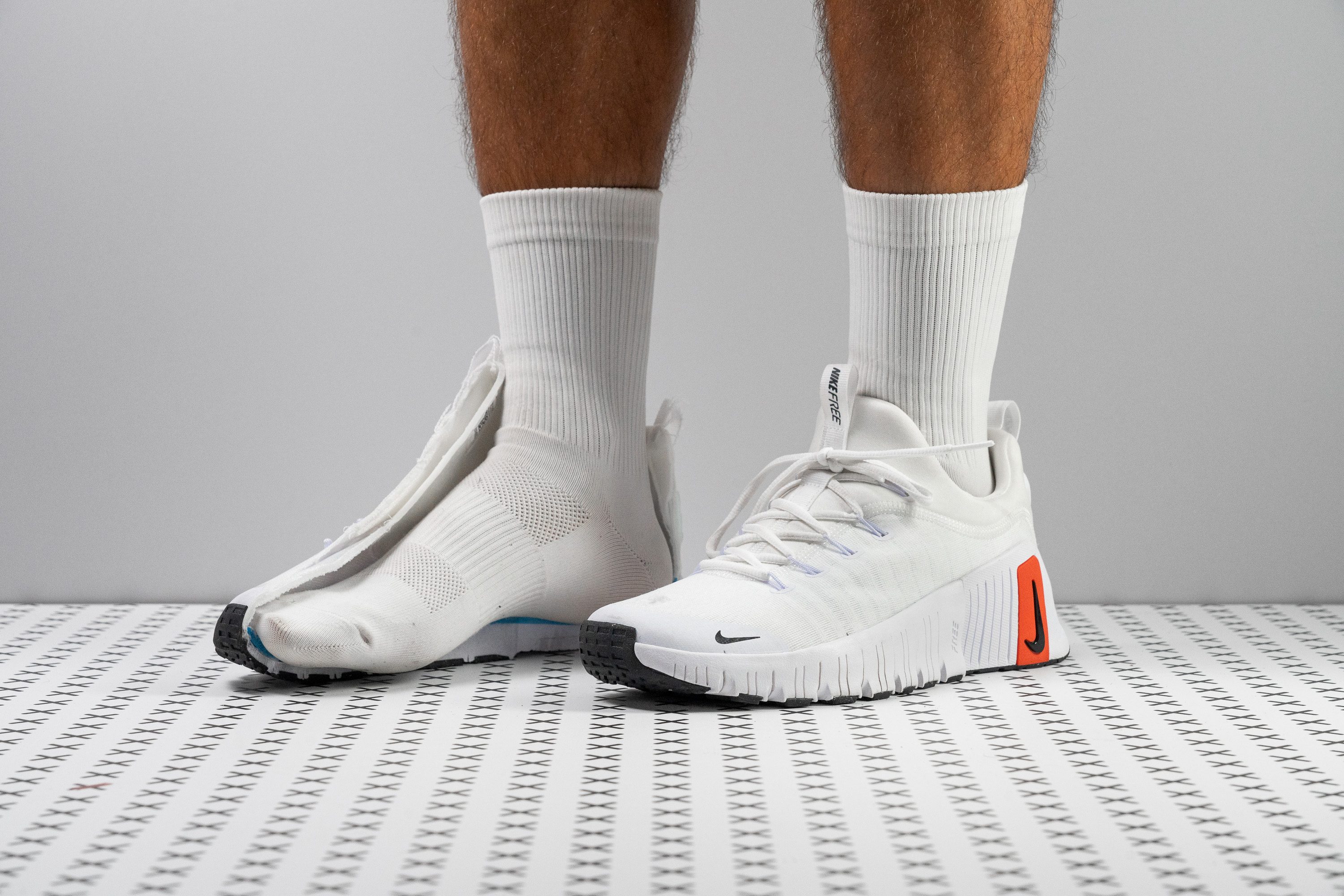





















































What makes it the best?
After assessing the top Nike cross-trainers on foot and in the lab, we found the Free Metcon 6 as the finest choice. From its airy design, remarkable flexibility, and solid stability, we felt confident tackling any programme we had for the day.
FM6 delivers a barefoot feel with its exceptional lightness, confirmed by our scales with a 9.7 oz (274g) figure, 10.5% below average. Its airy mesh upper enhances breathability, allowing our body heat to dissipate easily the same way smoke freely escaped in our lab test.
The midsole offers high flexibility and versatility, making a range of exercises feel effortless. We awarded it with a low 2/5 torsional rigidity score because of its minimal resistance to twisting. Meanwhile, it emerged 76.9% more bendable than average in our flex test. From lunges to lateral movements, we could move smoothly.
Amazingly, the FM6 maintains a stable feel despite its adaptiveness. We never had the feeling of toppling over and felt planted in the wide 113.9/94.4 mm base. Additionally, a firm 27.8 HA foam lies under the heel so it doesn’t compress suddenly when lifting.
However, we recommend avoiding rope climbs or any toe-dragging movements as the delicate upper is highly susceptible to damage.
Pros
- Fantastic breathability
- Very light on foot (lighter than average too)
- Abundant cushioning for HIIT
- Most flexible cross-trainer ever
- Excellent stability for moderate weightlifting
- Sock-like fit in a bootie upper
- Accommodating toebox (for medium feet)
- Great grip on gym surfaces
Cons
- NOT for rope climbs (lacks protection)
- Can be hard to put on (narrow opening)
Best Nike cross-training shoes for Crossfit















































What makes it the best?
We shuffled through Nike cross-trainers to find the ultimate CrossFit shoe - and it’s none other than Metcon 10. Our lab results show this incredibly supportive shoe has a wide base, good stability, flexibility, and excellent traction that allows us to power through our WOD. It’s versatile enough to handle hybrid training, but its strength in weightlifting makes it an awesome CrossFit partner.
We can “just do it” and lift away since the wide and sturdy base keeps us planted to the ground. Under the heel lies a non-compressible Hyperlift plastic for extra support when lifting heavier loads. With a midfoot band and a protective upper, Metcon 10 offers a solid foothold for better balance.
This pair proves it can handle multiple workouts. The rubber in the midfoot assisted our climbs and protected the upper from wearing out. On our lateral movements, we didn’t have any wobbles. We found manually twisting the shoe difficult, earning a high 4/5 torsional rigidity rating. This explains why we always feel so stable, regardless of our movement.
Our CrossFit sessions were dynamic and fast-paced, yet Metcon 10 conquered them all. The shoe moved freely with us. Our bend test confirms it’s even 13.2% more adaptive than average, a standout result for a lifting trainer.
On hot and humid days in the box, Metcon 10 feels too toasty. With subpar breathability, we recommend exploring other trainers for the summer.
Pros
- More versatile Metcon overall
- One of the lightest Metcons ever!
- ReactX adds shock absorption and energy return
- Increased forefoot flexibility
- Still amazingly stable for weightlifting
- Fantastic upper durability (even for rope climbs)
- Great grip on gym floors
- Highly secure foot lockdown
- Accommodating fit and toebox
- Handy Lace Tuck
Cons
- Outsole could be more durable
- Upper lacks breathability
Best Nike cross-training shoes for weightlifting
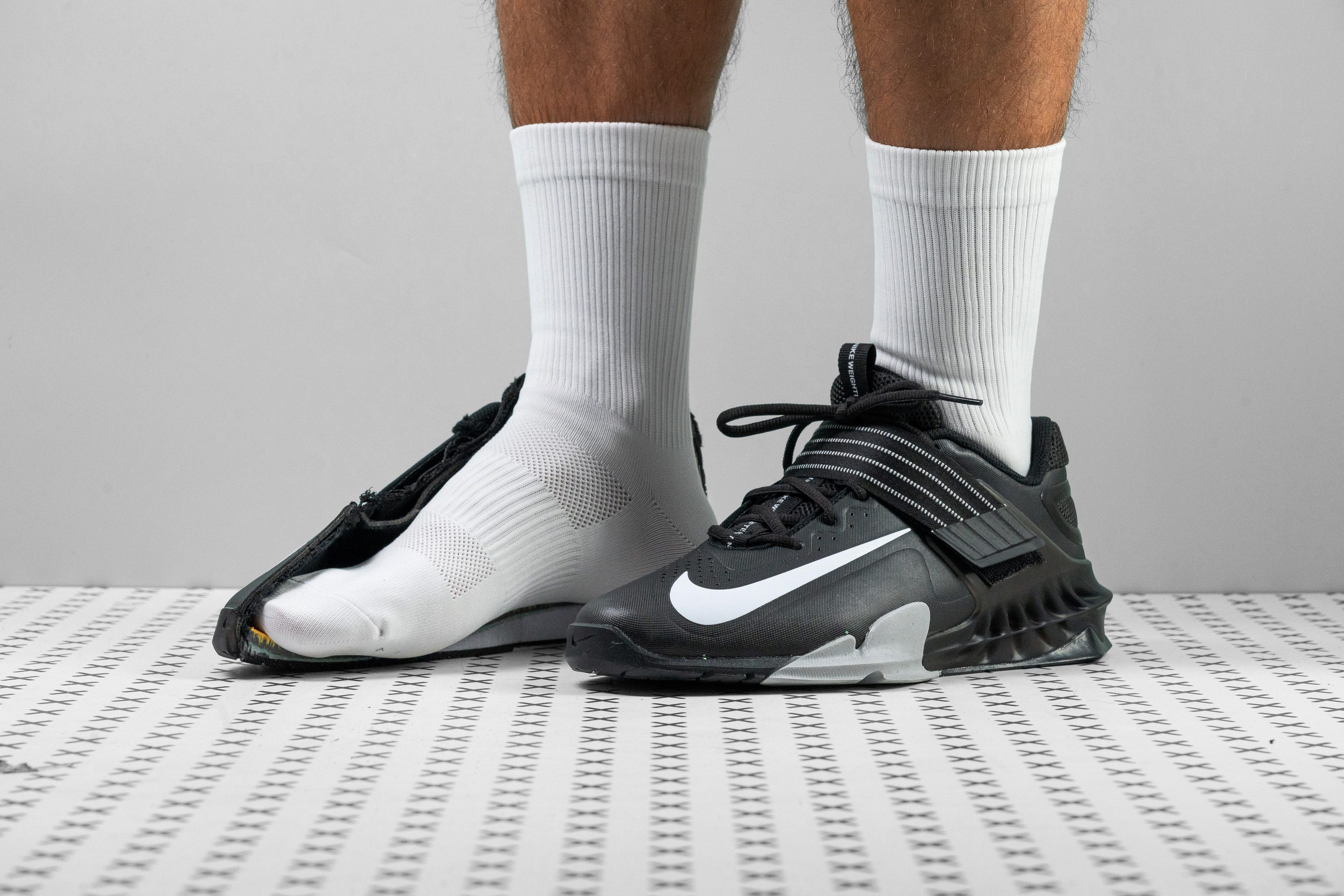







































What makes it the best?
The Nike Savaleos has a semi-gusseted tongue and a really stiff heel counter. These design elements surely helped this trainer become the versatile shoe that we needed for a wide array of exercises including lifting. What made this shoe even more suitable for lifters is its amazingly wide platform, which gave us a lot of anti-wobble benefits. No other Nike cross-training shoe comes close to the Nike Savaleos when it comes to lifting.
The shoe's semi-gusseted tongue allowed us to experience high levels of comfort and a good blend of secure support and freedom of movement. Hence, overhead snatches, jerks, and even squats were as easy to execute as box jumps and quick jogs in place.
The perfectly rigid heel counter complemented the benefits that the semi-gusseted tongue delivered. It kept the rear part of our feet secure all throughout our routines. In the lab, we gave this part of the shoe a perfect 5 for stiffness after manually twisting and squeezing it.
The Metcon 8’s wide platform was one of the main reasons this shoe became a dependable lifting partner. Using a calliper, we saw that the platform is 116.0 mm wide at the forefoot and 94.2 mm at the heel. These figures add 8.9 mm and 7.1 mm to the respective averages!
It’s just regrettable that the upper isn’t as durable as we would have wanted. It scored only a 3 out of 5 in our in-lab Dremel test for durability.
Pros
- Superb stability for moderate lifting
- Good for non-lifting exercises
- Very lightweight for a lifter
- Secure lockdown
- Flexible forefoot
- Excellent grip
- Comfortable in-shoe feel
- Reasonably priced
Cons
- Not for heavy weightlifting
- Not for wide feet
- Upper lacks durability
Nike cross-training shoes with the best energy return
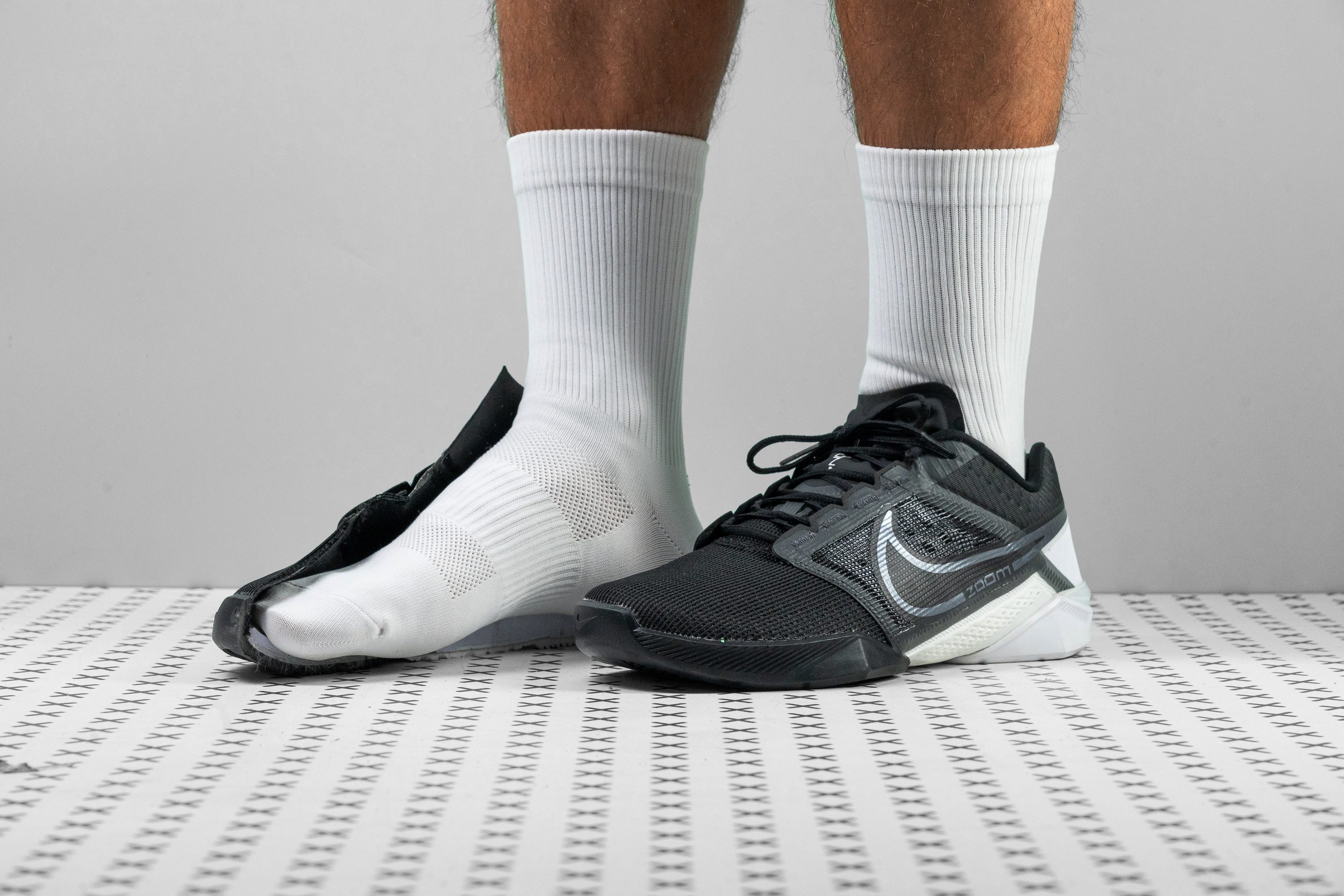




































What makes it the best?
The Zoom Metcon Turbo 2 took our cross-training to the next level by offering the best energy return among Nike trainers. It was a joy to include in our workout regimen because of its undeniable responsiveness and comfort. Lab results show it boasts a malleable build for adaptive movement, and unobstructed airflow for heated indoor sessions.
We took the shoe apart and discovered the forefoot has a Zoom Air unit, which explains why the shoe feels bouncy when we perform runs or rope jumps. Testing for energy return, we recorded a high score of 63.0% in the heel and 64.7% in the forefoot, confirming its explosive nature.
Balancing off all the energy is its fluid midsole. It follows freely with the natural flexions of our feet, confirmed by our bend test with a low 9.0N force to reach 30 degrees. Being 18.9% more flexible than average, it gives a lot of room for lunges and planks.
When the workouts got too intense, the upper gives much-needed ventilation. It doesn’t trap our body heat, confirmed by its maximum 5/5 breathability score in our smoke test. We also observed lots of ventilation holes in the toebox.
If rope climbing is a regular part of the regimen, we recommend going for a more durable shoe. Our Dremel easily wrecked this pair’s upper, so it can’t handle the burns and slashes from ropes.
Pros
- Bouncy Zoom Air in the forefoot
- Good for short runs
- Perfect for agility drills
- Stable for moderate lifting
- Excellent flexibility
- Amazingly breathable
- Durable outsole
- Reliable outsole traction
Cons
- Upper is not durable rope climbing
- Heavy for a "speed-oriented" trainer
Best Nike cross-training shoes for HIIT
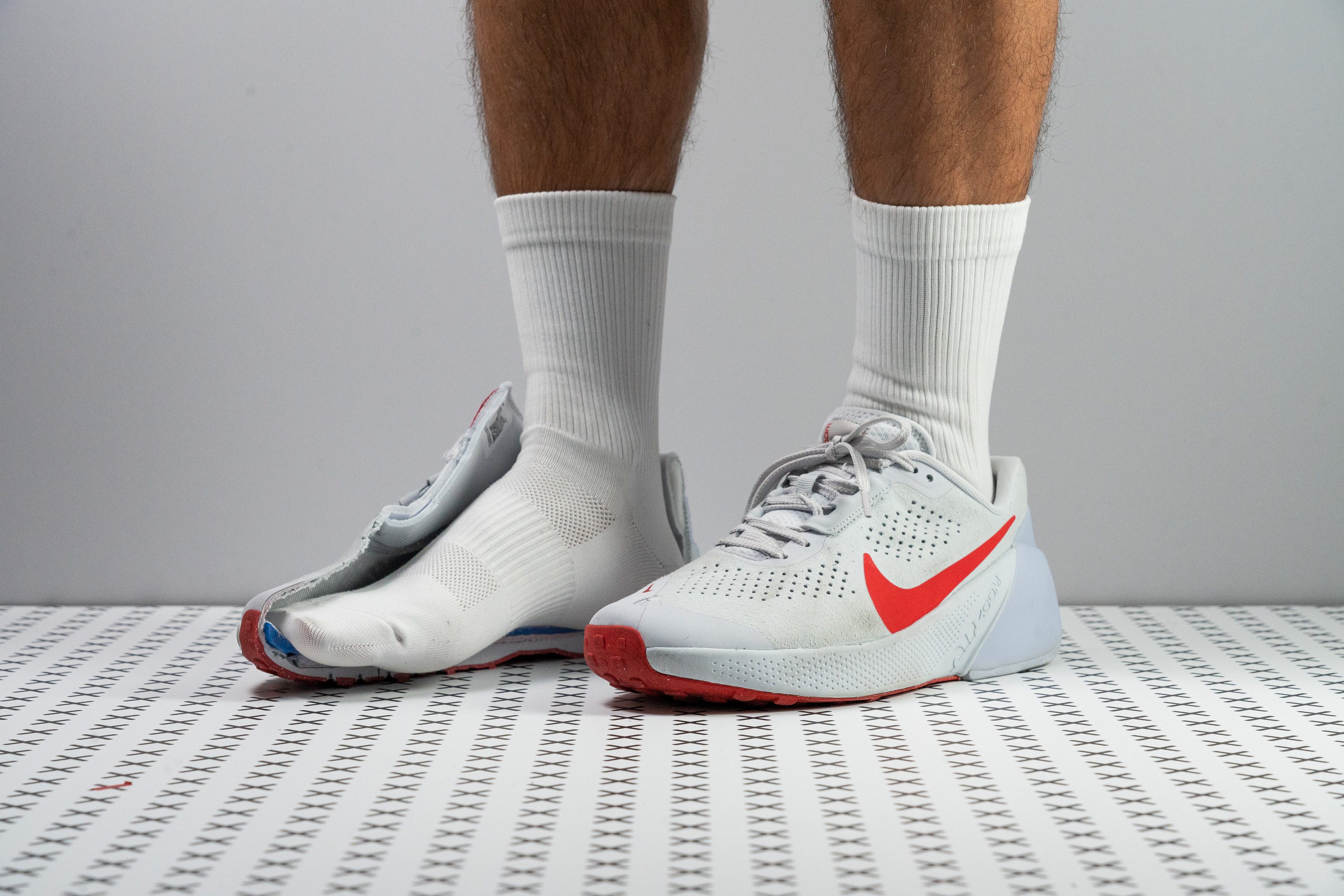











































What makes it the best?
Working out with Nike’s Air Zoom TR 1 gave us both explosive and gentle elements in the right places. The softness and flexibility of the midsole effectively toned down the impact of each strike. The energetic Air Zoom unit and the grippy base ensured responsiveness while maintaining stability. Among the Nike cross-trainers we lab-tested, we found this pair the best for HIIT.
This trainer exhales tonnes of power and unwavering support, providing massive energy return with each takeoff and plush cushioning with each landing. Upon dissecting the midsole, an Air Zoom unit unveils itself, explaining the springy sensation we experienced during run intervals and high knees. Saving us from leg fatigue is the cushion’s softness, which our durometer confirms is 24.6% less dense than average.
We effortlessly completed exercises that involved bending our feet such as planks and lunges due to the midsole’s adaptive nature. True enough, it emerged 8.8% more flexible than the average trainer in our lab.
Balancing the fluidity is a stiff yet not too firm heel to keep us centred and stable. Our manual assessment confirms this with a rigidity score of 4/5. Additionally, the outsole’s traction is reliable even on shiny gym floors, with the rubber exhibiting a 10.0% softer and stickier composition than average. Because of the outsole’s lighter construction, we recommend using this trainer for indoor sessions to avoid premature wear.
Pros
- Dependable bite on gym floors
- Pretty durable toebox
- Good impact protection
- Nice lateral stability
- Secure heel hold
- Smooth heel-to-toe transitions
- OK for occasional outdoor use
Cons
- Not breathable at all
- Not for heavy lifting
- Not for heavy lifting
Best minimalist Nike cross-training shoes
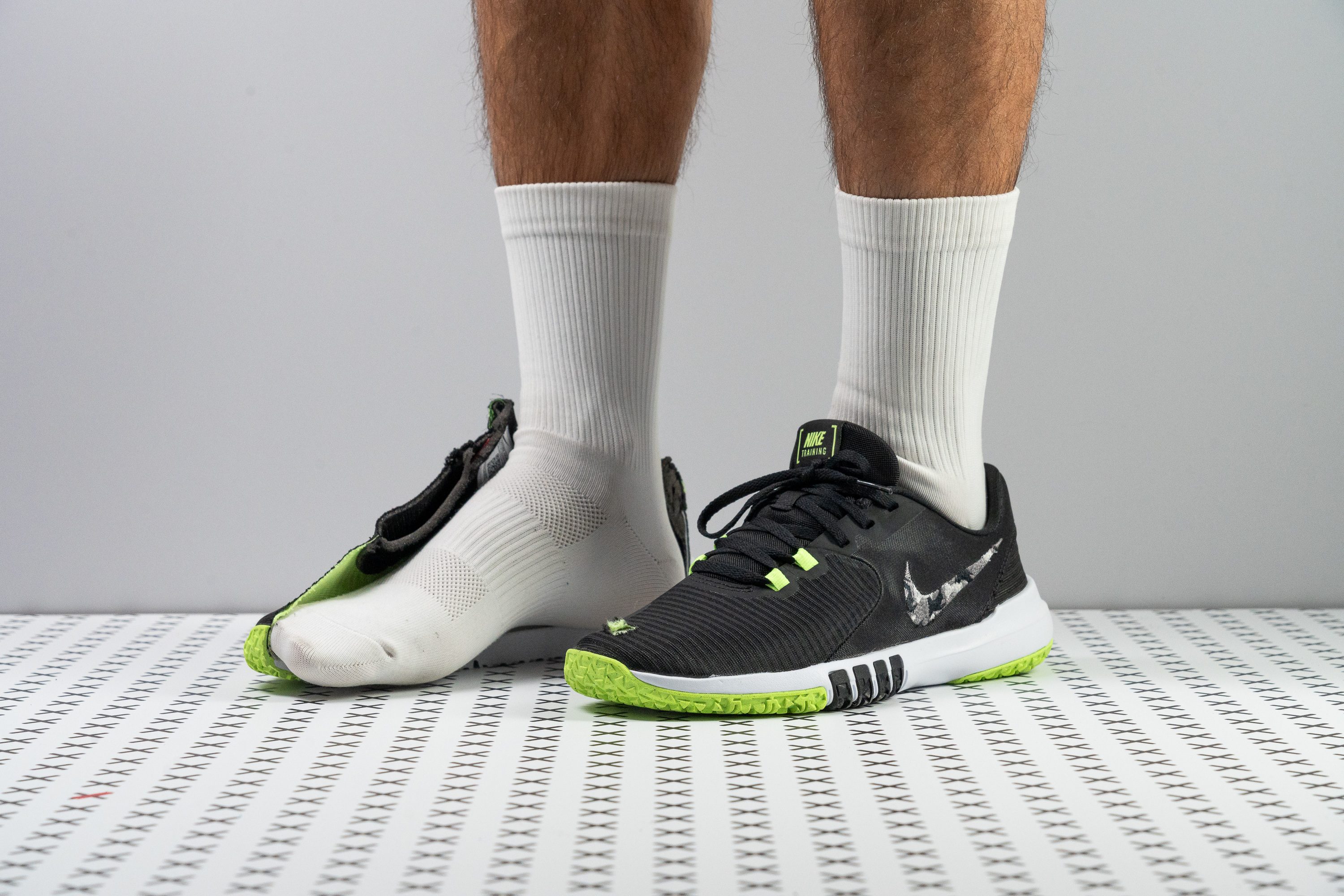





























What makes it the best?
The Flex Control 4 did everything as a good minimal cross-training shoe should: it helped us accelerate and provided us with a stable base without putting on so much weight. Because of all these benefits, we declare the Nike Flex Control 4 as the best minimalist shoe among all the cross trainers that we have worn so far.
The quick-footedness that this trainer afforded us was a result of the synergistic performance of two features: a low-to-the-ground profile and a firm midsole. Through our calliper measurements in the lab, we discovered that the midsole is only 19.0 mm and 15.6 mm thick at the heel and forefoot. This makes it far thinner than average, which has respective measurements of 24.6 mm and 18.3. Compared to that of the typical cross trainer that has a firmness score of only 27.0, the cushion is firmer at 32.0 as per our HA durometer.
The Flex Control 4 also has a wider base. We learned through our calliper measurements that this shoe’s footprint is 111.0 mm wide at the forefoot while it’s 89.2 mm wide at the heel. These numbers are 1.4 mm and 2.2 mm wider than average. The extra width was enough to stabilise our stance when we did light to moderate lifts.
The weight is a sure highlight of this shoe. Weighing only 9.8 oz or 277g, this shoe is indeed lighter than the typical trainer that weighs 11.2 oz or 317g.
The durability of the upper was a source of concern. After just a few rigorous sessions, it already showed considerable damage. Because of that, we don't recommend the Nike Flex Control 4 to gym goers who prioritise durability.
Pros
- Comfortable in-shoe feel
- Feels nimble and agile
- Lighter than average
- Very flexible
- Foot feels planted
- Budget-friendly
- Good grip
- Simple aesthetics
- True to size
Cons
- Durability issues
- Not for serious workouts
Best budget Nike cross-training shoes
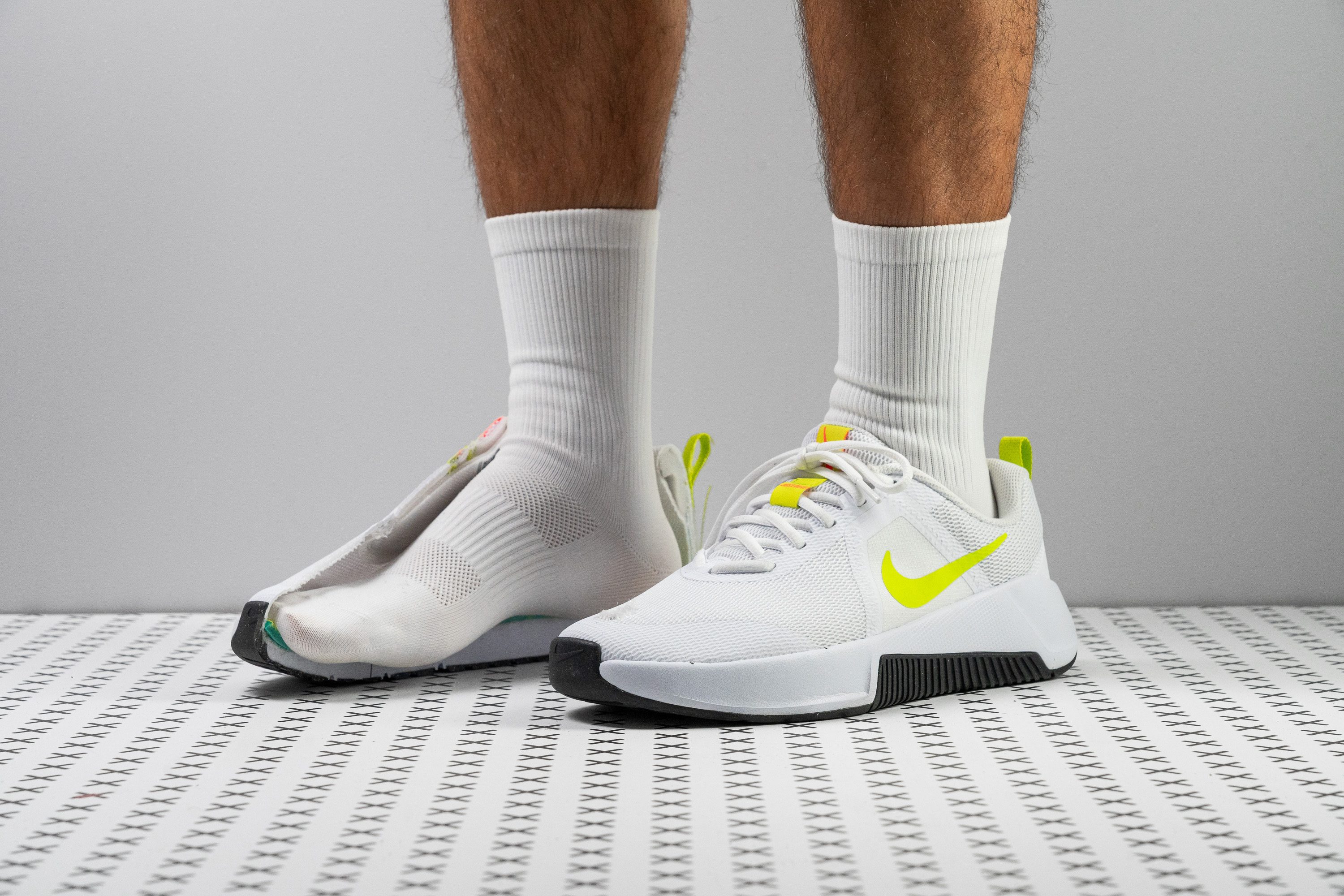

















































What makes it the best?
An effective cross-trainer needs to be versatile and comfortable, and that’s exactly what the Nike MC Trainer 3 delivered in our workouts without the steep price tag. For only £80, we enjoyed its plush cushioning, agile feel, and breathable upper, all backed up by our lab numbers. The average Nike cross-trainer costs £110, so it’s easily our most bang-for-the-buck pick.
Repetitive jumping and treadmill running didn’t bring any muscle pain due to the abundant cushioning, confirmed by our calliper with an above-average stack height of 30.6/21.8 mm. Plus, our durometer proves it's 13.0% softer than average! Despite this, we felt well-planted during single-legged exercises and lateral movements.
When it was time to bring up the pace, we could easily do so thanks to its light 10.4 oz (296g) build. Lifting each foot felt easy, and when it came to lunges and burpees, we could easily bend the shoe with little resistance. Our bend test confirms that only 12.3N of force is needed for the midsole to reach 30 degrees.
Even with buckets of sweat, our feet stayed dry and comfortable, thanks to the breathable mesh upper. Smoke freely escaped the shoe when we pumped it in, earning the highest 5/5 breathability score. However, we can't rely on this trainer for abrasive activities because the upper easily surrendered to our Dremel.
Pros
- Fantastic value for money
- Highly breathable
- Doesn't drag the foot down
- Better cushioned than v2
- Heel bevel is better for running and walking
- Decent stability for moderate workouts
- Good flexibility for lunges and planks
- Accommodating toebox
- Comfortable padded interiors
Cons
- Not for flat and wide feet (narrow midfoot)
- Upper lacks wear resistance
- Weak outsole grip
What to look for in your future Nike cross-trainers
Nike has a long history of producing high-quality athletic footwear. Its cross-training shoes are designed to provide support, stability, and comfort for a variety of workout types.
There are a few important parameters to consider before you buy a pair of Nike training shoes. Ticking off the following few boxes in Nike cross-trainers will help you get the best out of your workouts.
Support and stability
If you include a lot of weightlifting in your routine, your trainer should have a firm and wide heel, a stiff heel counter, and lots of side support (high torsional rigidity). The best shoe for the job is the Nike Metcon.
Cushioning
The level of cushioning you need depends on the type of activities you will be doing.
Most Nike cross-training shoes have a good balance of cushioning and support, but some offer a little more cushioning for jumps and runs. Shoes with higher SA measurements are better for cardio, aerobics, treadmill runs, and other high-impact activities.
Breathability
Look for shoes that allow your feet to breathe; this will help prevent your feet from overheating and prevent blisters. We assess each shoe's breathability level on a 1-5 scale with the help of a smoke-pumping machine.
Durability
Cross-training shoes should be able to withstand the wear and tear of different types of activities.

We put each Nike shoe's toebox and heel padding through a series of durability tests involving a Dremel. Each one is then assessed on a 1-5 scale, where 5 is the most durable.
And when we check the shoes' outsole durability, we use a tread gauge to measure the depth of the dent created by the Dremel. The shallower the damage, the better the wear resistance.
Flexibility
Cross-training shoes should have a flexible sole that allows for natural foot movement and helps you pivot, jump, and change direction easily. If you prefer a very natural underfoot experience, get the super-flexible Nike Free Metcon. Or a Nike Flex Control, if you are on a budget.
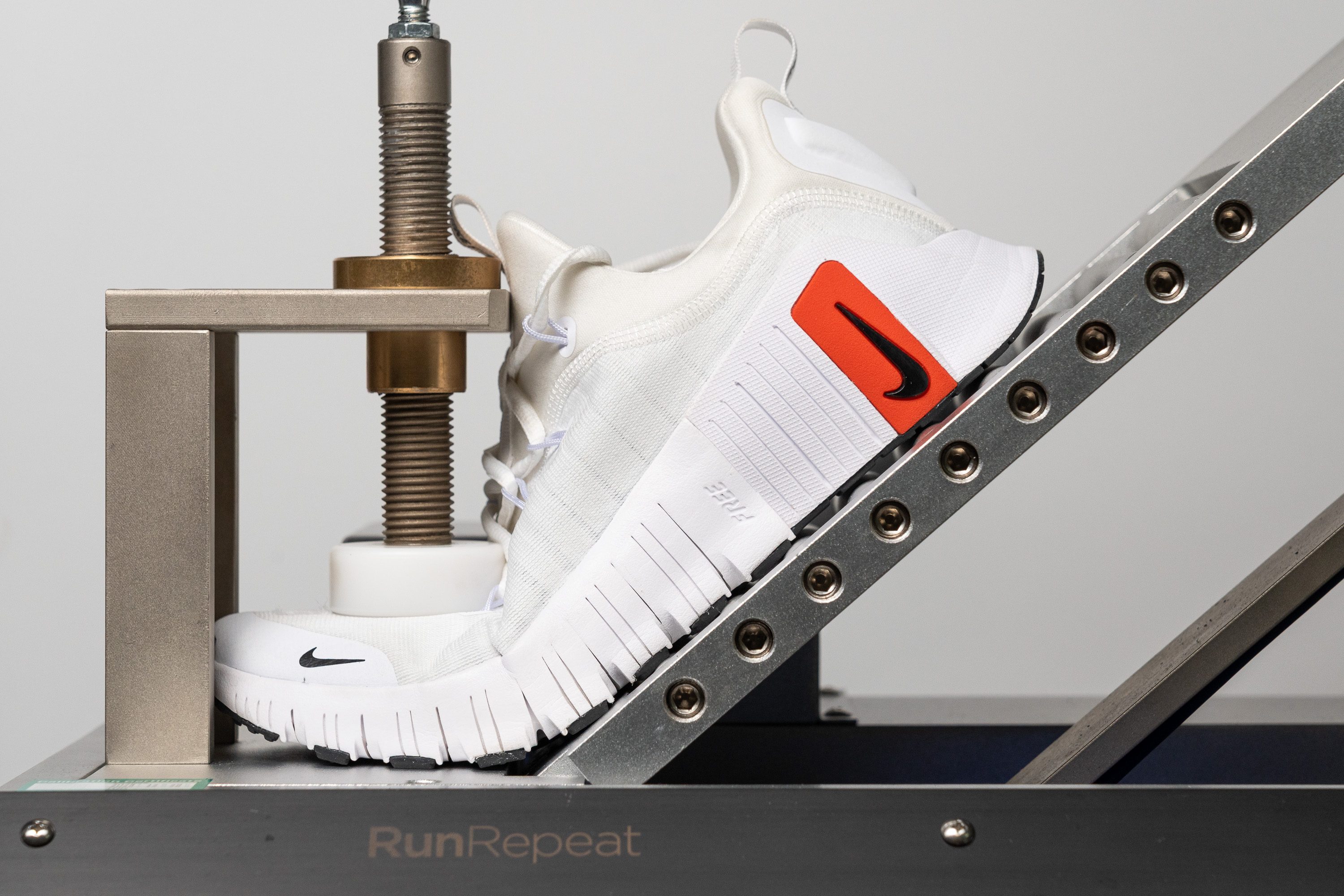
Fit
To help you find a well-fitting pair of Nike cross-trainers, we create a gel mould of each shoe's interiors and measure it in three areas: the shoe's widest part (ball of the foot), the toebox width (big toe area), and the toebox height.
We also provide detailed information on each Nike shoe's fit in our lab reviews.
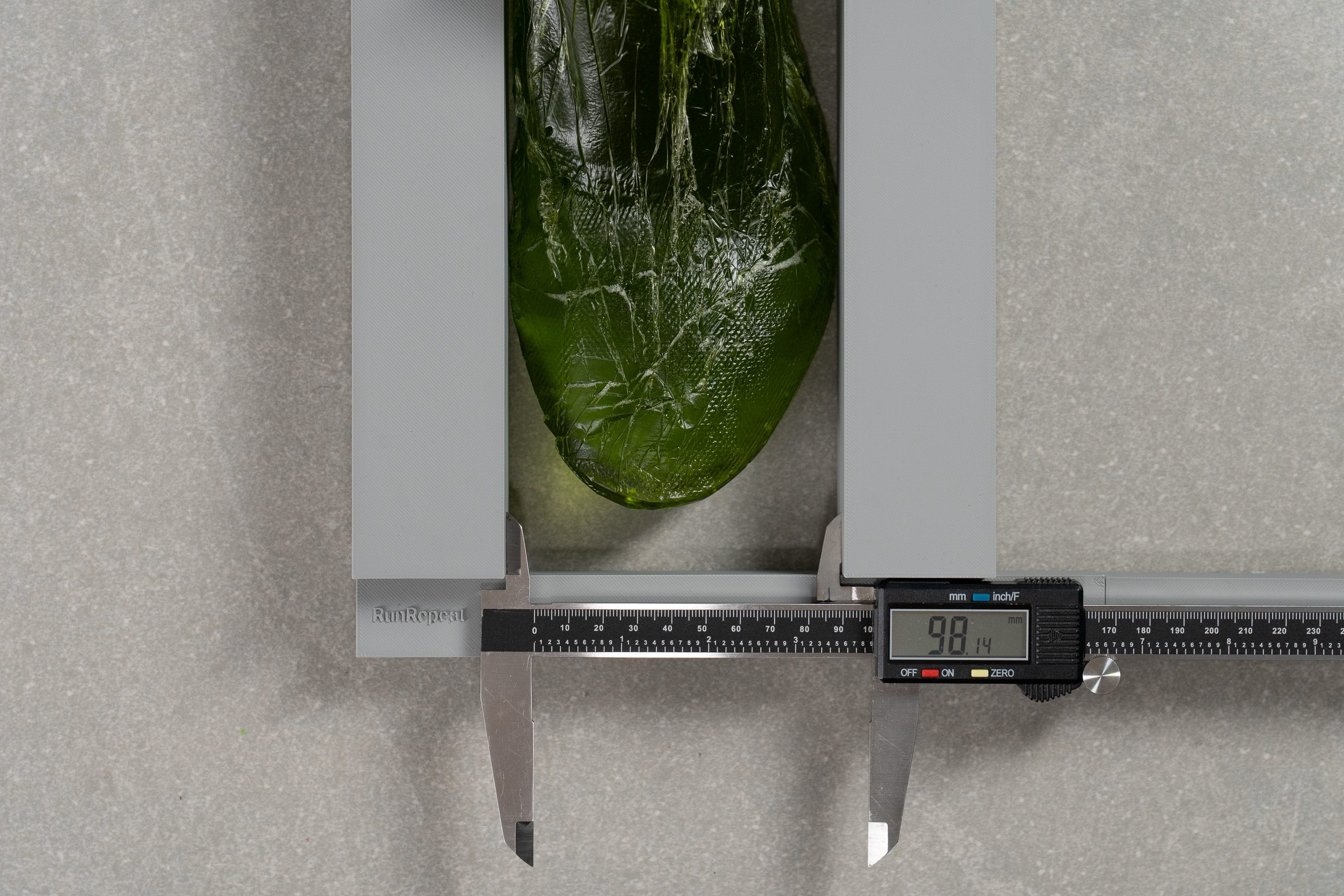
Cushioning technologies in Nike cross-trainers
Nike uses a variety of cushioning technologies in its cross-training shoes which vary depending on the shoe's purpose. Some of the most common types include:
- React foam: The most common cushioning used in Nike training shoes. Durable and responsive, it also provides good impact protection and energy return.
- Zoom Air: This is a type of pressurised air cushioning that provides plenty of energy return. These units are often found in the shoe's heel or forefoot.
- Phylon: basic lightweight foam often found in the more budget-oriented Nike models.
In some cases, Nike also uses dual-density foam. It is a combination of two different types of foam where the firmer is placed in the heel for support and the softer one in the forefoot, for cushioning.
What’s the difference between Nike cross-training shoes and Crossfit shoes?
Nike Crossfit shoes and Nike cross-training shoes are both types of athletic shoes that are designed for different types of activities.
Nike Crossfit shoes are specifically designed for the sport of Crossfit, which involves a combination of high-intensity functional movements, such as weightlifting, gymnastics, and cardio exercises. These shoes typically have features such as reinforced toes, sticky rubber outsoles, and sidewalls for rope climbs. Nike Metcon is the brand's flagship Crossfit shoe.
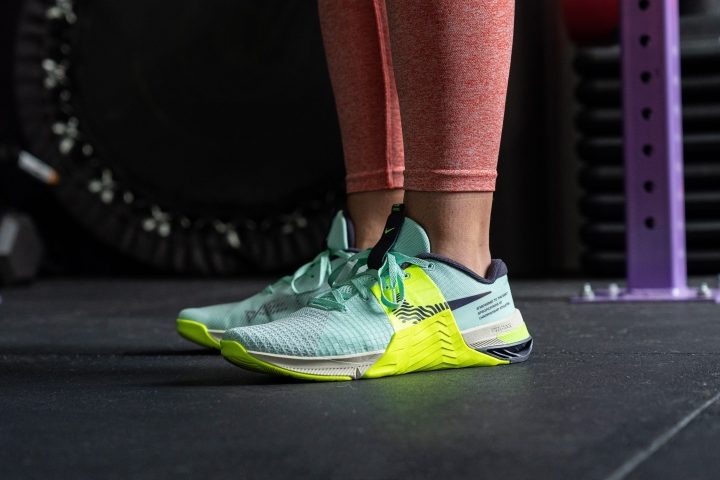
Nike cross-training shoes, on the other hand, are designed for a wider range of activities that involve a combination of different types of movements, such as running, jumping, lifting weights, and performing bodyweight exercises.
A brief history of Nike cross-trainers
Nike has a long history of producing athletic shoes for a variety of sports and activities, including cross-training. The company first began producing cross-training shoes in the 1980s and 1990s, with the introduction of models such as the Nike Air Trainer 1 and the Nike Air Trainer SC.

These early trainers had leather uppers and the iconic Air units. Nowadays, they have turned into retro trainers.
In the early 2010s, Nike began to focus more specifically on the cross-training market, with the introduction of shoes such as the Nike Free Trainer and the Nike Metcon. These shoes were designed with features such as flexible soles, reinforced toes, and sticky rubber outsoles, making them well-suited for a wide range of cross-training activities.
